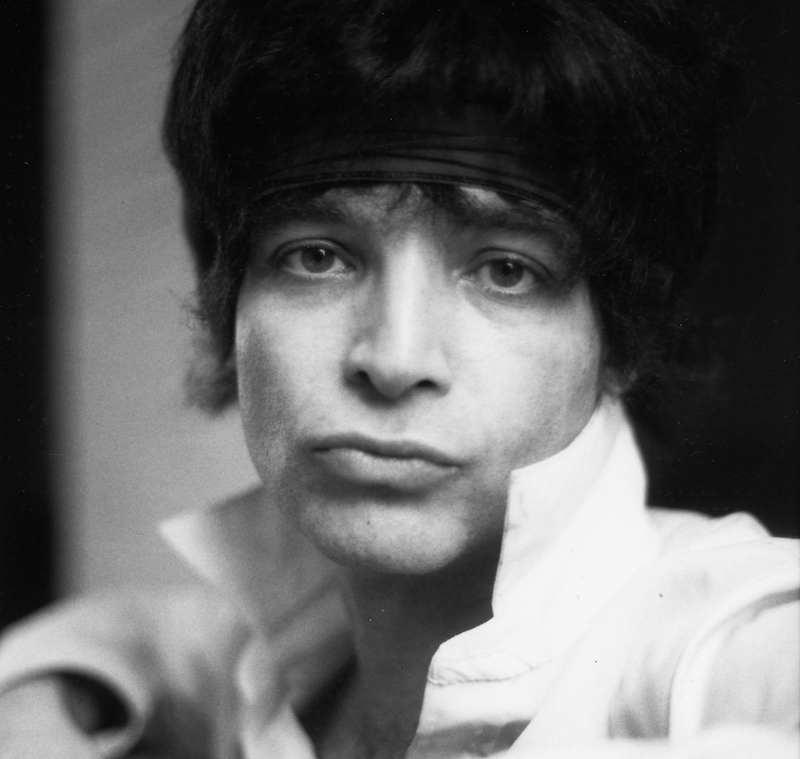
Sacred Bones Records to release lost Alan Vega album ‘Mutator’
Sacred Bones Records will release the lost album from Alan Vega, entitled Mutator, on April 23rd. Vega’s name is synonymous with unfettered creativity, from the late 1950s, through his years playing in Suicide, and all the way up until his death in 2016, Vega was constantly creating. This process naturally led to a wealth of material that didn’t see the light of day immediately when it was recorded, which came to be known as the Vega Vault. Mutator is the first in a series of archival releases from the Vault that will come out on Sacred Bones Records. It was recorded with his longtime collaborator Liz Lamere and discovered in the vault in 2019 by both Lamere and his close friend and confidante Jared Artaud (The Vacant Lots). Soon after they mixed and produced the songs into the visionary album that was lurking within those tapes. Today the first track from the record “Nike Soldier” is streaming online with the accompanying video. Pre-order Mutator here.
Speaking about “Nike Soldier”, Jared Artaud said “Working on this album, I was blown away by the sheer intensity and raw power of Alan’s ability to transform sound and deliver inimitable one-take vocal performances. “Nike Soldier” is a supreme example of Alan’s unparalleled instincts.”
And Vega’s longtime creative ally Liz Lamere added “In all of his artistic expressions Alan had a unique ability to pull from an eclectic mix of cultural references and turn them on their head. If we asked him to give us a quote about ‘Nike Soldier’ he’d say ‘Do it Just’.”
The video, directed by Jacqueline Castel, channels themes of death and resurrection. Castel explains, “Performer Kris Esfandiari (King Woman, NGHTCRWLR etc.) mutates into punk iconoclast Alan Vega in a karaoke toe-to-toe, set against a reliquary of Vega’s light sculptures and totems from his personal wardrobe, including his famed Champion gloves and beret.”
The visual artist, musician, and poet Alan Vega was born in Brooklyn in 1938. He co-founded the massively influential avant-garde band Suicide with Martin Rev in 1970, with whom he performed off and on throughout his life. Suicide’s debut album was included among Rolling Stone’s list of the 500 greatest albums of all time, and it was a formative work in the invention of synth-punk, post-punk, art rock, industrial music, and more.
Vega would go on to have a prolific career as a solo artist. His hit song “Jukebox Babe” led to a contract with Elektra Records, who released two albums including the cult classic Saturn Strip, produced by Ric Ocasek. From there, rejecting the commercial machine, he went back to his roots, doing a deep dive into experimenting with sound in the studio. This era resulted in new solo records coming out consistently throughout the next several decades; starting with Deuce Avenue, continuing through Dujang Prang (on Henry Rollins’ 2.13.61 imprint), and culminating with his masterpiece It. Vega considered the albums from this period the audio counterpoint to his visual art that reflected the world around him while simultaneously delving into universal themes. It makes his work as relevant today as it was then.
It was during this period that he began working with Liz Lamere, who became his wife and the most crucial collaborator of his solo career. Lamere, along with fellow Vega collaborator Jared Artaud, discovered in 2019 the lost Vega album Mutator, which they co-produced and mixed. Along with creative director Michael Handis, they are now spearheading the Alan Vega Vault project, which aims to bring rare and unreleased work from throughout Vega’s career to the public for the first time.
The record was recorded withLamereat Vega’s NYC studio from 1995-1996, and it serves as a document of a particularly fertile time in his creative life. He had 11 full-length solo albums come out during the ’80s, ’90s and ’00s — plus numerous collaborations and Suicide records A Way of Life, Why be Blue and American Supreme. Mutator wasn’t shelved intentionally, but Vega’s back-to-the-grindstone M.O. meant that he had moved on to making his next record before this one was finished.
“Alan was driven to create, his focus always on looking ahead to discover new terrain by experimenting with sound and visuals. He rarely looked back at what he had done before, and as soon as he was moving in a new direction it became a relentless pursuit of the unknown” Lamere recalls. “Our primary purpose for going into the studio was to experiment with sound, not to ‘make records.’ I was playing the machines with Alan manipulating sounds. I played riffs while Alan morphed the sounds being channeled through the machines.”
At the time of the Mutator sessions, Vega was massively inspired by what was happening in the streets of New York — not only the hip hop scenes that were exploding throughout the outer boroughs, but also the literal sounds of the streets, the traffic noise and industrial ambiance of city living. That influence trickled into the sounds he and Lamere captured in those sessions. That sensibility, paired with Vega’s unmistakable voice and force of personality, is what made it the great album it is now. The final piece was the production job, completed by Lamere and Artaud 25 years after the songs were first captured.
“The moment Liz and I discovered the original ADAT tapes of Mutator, we knew we had found something special and felt strongly that it needed to be shared out in the world. Mutator bridges the gap between the past and present,” Artaud says. “It’s something we feel he would have been really proud of, seeing this lost album released today. In so many ways, his music is needed now more than ever.”
